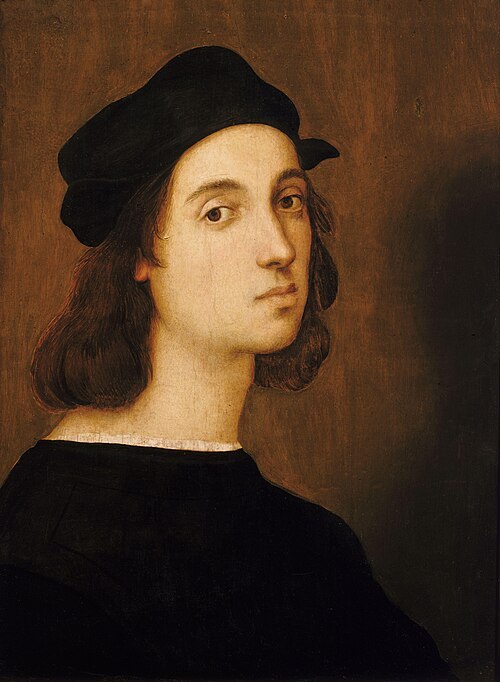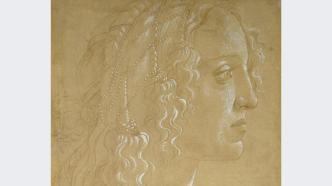
During the Renaissance, drawings became an integral part of the large number of paintings and murals associated with that period. Sandro Botticelli (c. 1445-1510) was unique in his sketches. Botticelli's lines are the basis for the dance-like aesthetic that runs throughout the work, an aesthetic that can be seen in masterpieces such as The Birth of Venus.
The Paper has learned that "Botticelli Drawings" is on display at the Legion of Honor museum in San Francisco, USA. This is the first exhibition dedicated to his sketches. The exhibition explores the fundamental role that drawing played in Botticelli’s work, including how it distinguished Botticelli and continues to resonate more than 500 years later.
Particularly noteworthy is the research nature of this exhibition, with curator Furio Rinaldi (Curator of Prints and Paintings at the Museum of Fine Arts in San Francisco), an expert on the Italian Renaissance, newly attributed to Botticelli The five sketches correspond to the characters in his representative oil paintings, revealing the artist's painting skills, pursuit of ideal beauty and control of lines.
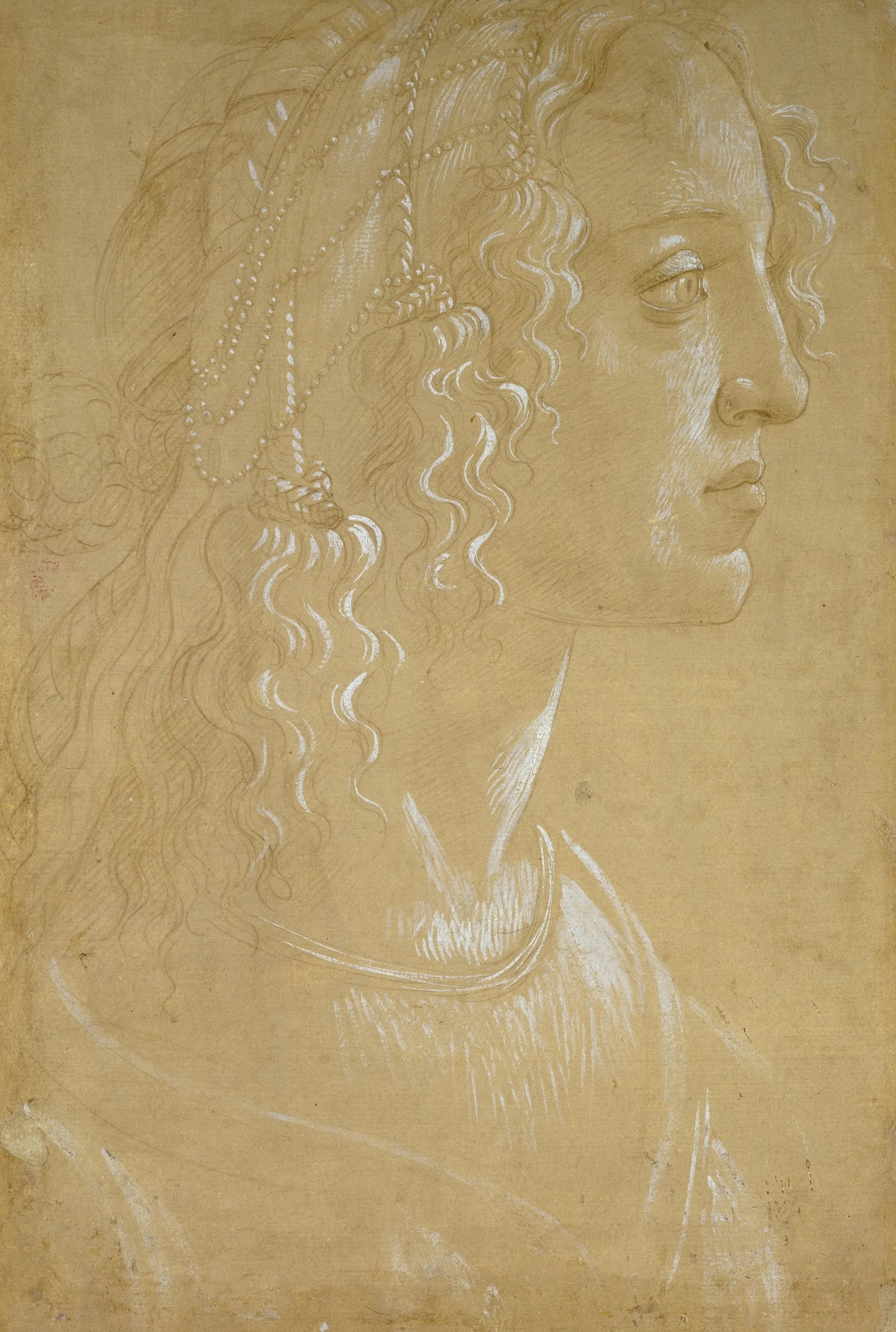
Botticelli, Study for a Lady in Profile, Right Side, circa 1485, Ashmolean Museum of Art and Archeology, Oxford, UK
It is reported that this exhibition centered on Botticelli's sketches has been prepared for three years. It displays 27 sketches by the artist, including 5 newly recognized works, as well as paintings from the Louvre, the National Gallery in London, and the U.S. in Florence. More than 60 sketches and oil paintings are on loan from 39 institutions including the Fitz Art Museum, making it one of Botticelli's largest exhibitions in recent years.
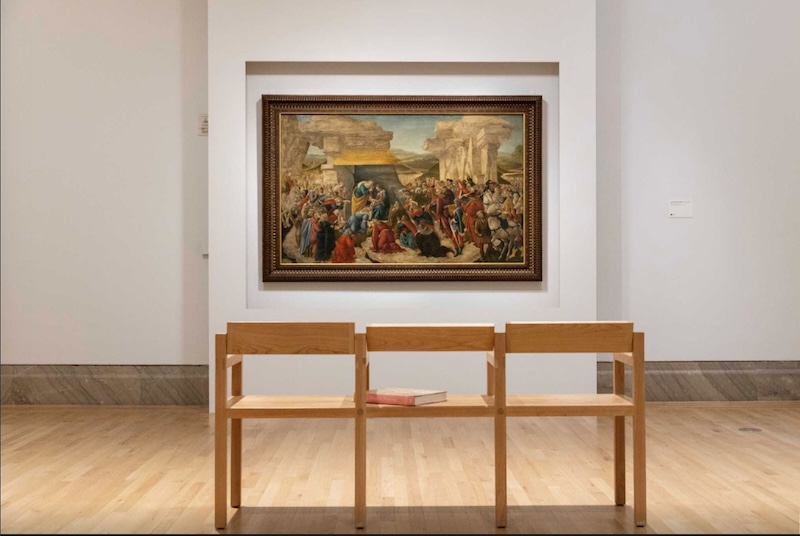
Exhibition site, Botticelli's work "The Adoration of the Magi"
Alessandro Filipepi was born in Florence around 1445. He was known as Botticelli during his lifetime, a nickname he inherited from his older brother "Botticello" - which means "little bottle" or "barrel" and may be an allusion to the A love of wine or a big belly, or both.
In the early 1460s, when Botticelli was about 15 years old, his father sent him to the studio of Fra Filippo Lippi (circa 1406-1469) to study painting. Lippi was the favorite painter of the Medici family at the time. His Gothic techniques, grasp of three-dimensional objects, expression of subtle facial expressions and attention to detail all influenced Botticelli's future painting style. had an impact. Botticelli's earliest surviving drawings attest to his reliance on Lippi's painterly form and technique.
But unlike his teacher, Botticelli paid more attention to the depiction of human figures, whether nude, semi-nude or clothed, which reflected humanism's affirmation of personal consciousness and 15th-century Florence's appreciation of the aesthetics and proportions of the classical era. Refocus.
One of Botticelli's artistic legacies was the creation of the portrait technique. Botticelli's sketched head studies prepared figures for personal portraits or large narrative scenes. He addressed how to convincingly shape a face, how to depict Changes in light and shadow, and how to achieve psychological personalization and other issues.
Five newly discovered drawings correspond to Botticelli paintings
Drawing was a way for Western artists to arrange space in their compositions. It also helped artists hone their incredible skills and depict lifelike poses. Drawing gave rise to Leonardo da Vinci, Titian, and was even used in legally binding documents. The contract provides a reference for the agreed commission of work.
Like many painters of the era, Botticelli relied on sketches throughout his creative process to help hone and shape the form that would eventually become his work. The exhibition "Drawings of Botticelli" attempts to show how sketches made Botticelli stand out, allowing him to still resonate and be used in fashion more than 500 years later.
While Botticelli is best known for his greatest paintings, a lesser known (but equally impressive) part of his oeuvre are his drawings. Fewer than 30 Botticelli drawings are known. In preparation for the exhibition, curator Rinaldi conducted a thorough technical and stylistic analysis of previously unattributed drawings, establishing connections with the artist's earlier paintings. Through this research, he attributed five new paintings to Botticelli.

Botticelli, "Female Head Looking Down on the Left", circa 1468-1470, Christ Church Art Gallery, Oxford

Botticelli, Madonna and Child with Young John the Baptist (detail), circa 1465–1470, Louvre Museum
Among them, a female and a male head are each carefully drawn with a metal-tipped pen, probably cut from the same yellow ocher paper. "Female Head Looking Down on the Left Side" (ca. 1468-1470) can be compared with "The Virgin and Child and Young John the Baptist" (ca. 1465-1470). The figure's round eyes, arched eyebrows and small, protruding lips are very similar to the Madonna in the painting.

Botticelli, Profile of a Man Looking Left, circa 1468-1470, Christ Church Art Gallery, Oxford
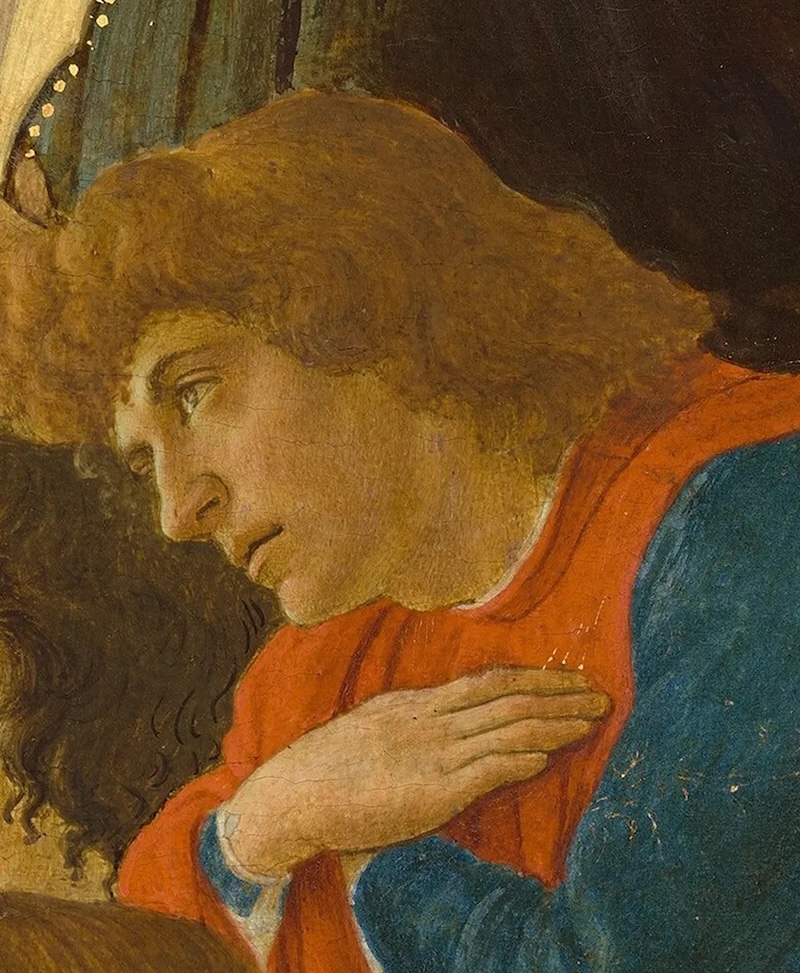
Botticelli, The Advent of the Magi (detail), 1478/1482, National Gallery of Art Collection
"Side Profile of a Man Looking to the Left" (ca. 1468-1470) can be related to the third figure on the right in Botticelli's "Adventure of the Magi" (1478/1482). Especially the lighting, facial structure (protruding nose, chin and almost open mouth) almost correspond.

Botticelli, The Advent of the Magi, 1478/1482, National Gallery of Art
Although prepared as sketches for a specific painting, the two faces became templates used repeatedly by Botticelli and his studio. The woman became the model for works such as "Madonna of Loggia" (circa 1466-1467, collected by the Uffizi Gallery) and "The Sleeping Christ" (circa 1485, collected by the National Gallery of Scotland); while the man's head is in It is used again in the angel on the right side of the Virgin and Child (15th century, Strasbourg City Museum).

Botticelli, Madonna of Loggia, circa 1466-1467, Uffizi Collection
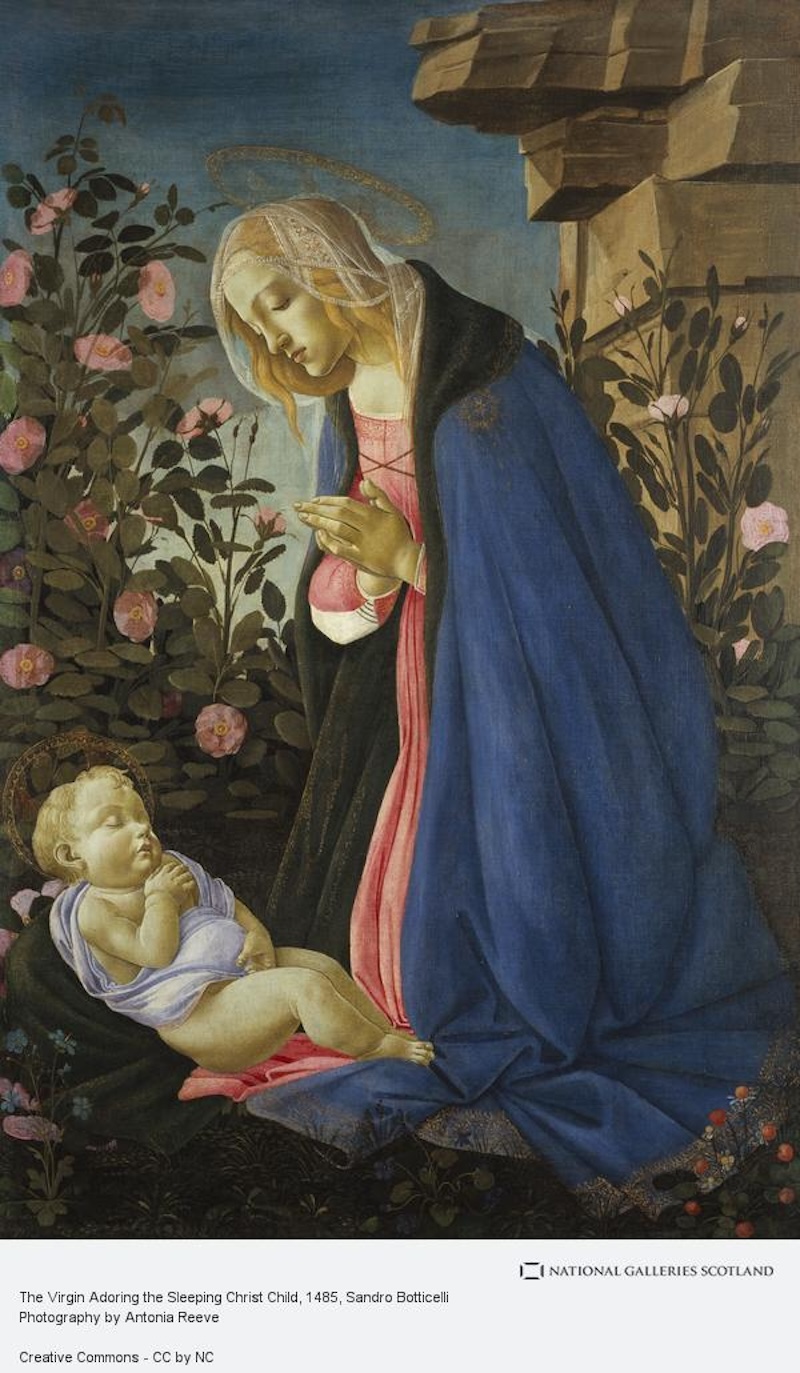
Botticelli, The Sleeping Christ, circa 1485, National Gallery of Scotland
Two other cropped drawings match the profile of the archangel Gabriel in the famous Annunciation (1489). They are painted on Botticelli's usual yellow ocher paper, lightly shaded with a metallic pen. The light shines on the figure from the upper left, and the light and shade are consistent with the oil painting. They are drawn with short, curved white lines, applied with a fine-tipped brush, a technique typical of Botticelli.
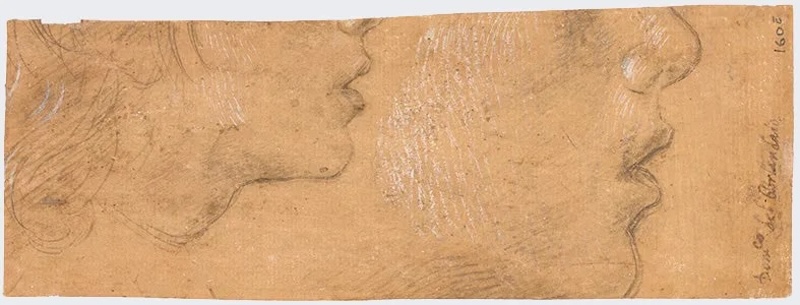
Attributed to Botticelli, Study for Side View, circa 1475, Uffizi Collection
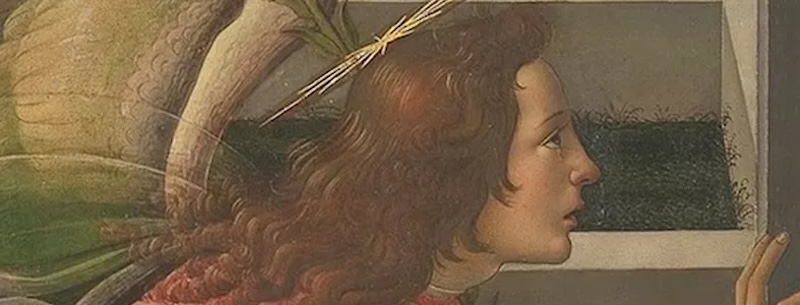
Botticelli, Annunciation (Annunciation in Castelo, detail), 1489, Uffizi Collection
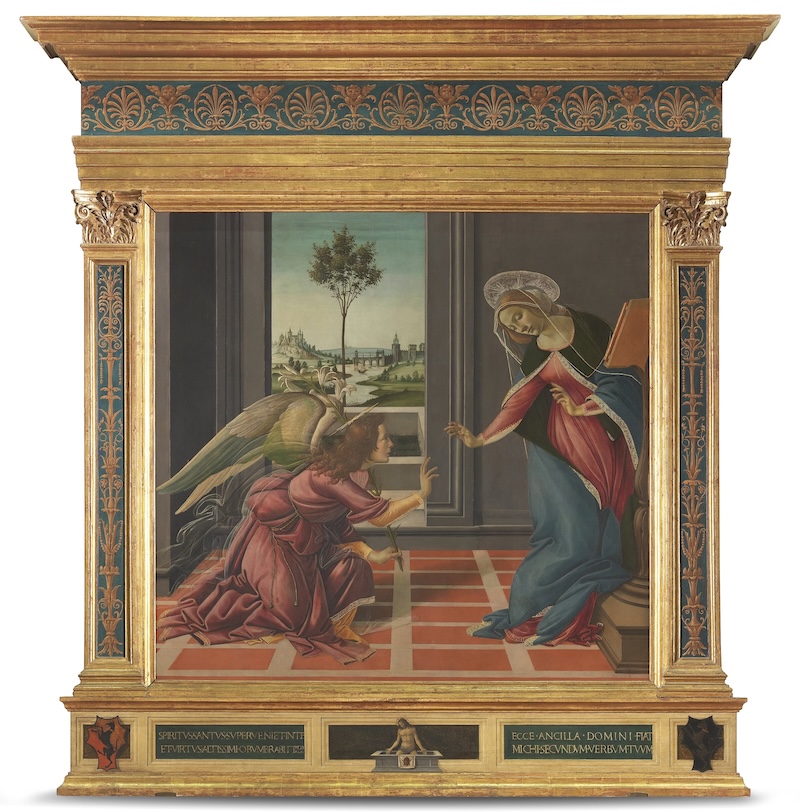
Botticelli, Annunciation, 1489, Uffizi Gallery
In the 19th century, the sketch of "The Annunciation" (1485-1490) was exposed to light for a long time, causing the traces of the ink pen to almost disappear. But if you look closely, you can still discern the thin and smooth lines that are characteristic of Botticelli's paintings in the late 15th century. In sketches, Botticelli explored at least four different options for the angel's arms. You can also see the long stem of the lily extending to the upper left corner of the painting. This sketch is most similar to the archangel Gabriel in the Annunciation (c. 1485-1493, Kelvingrove Museum, Glasgow, Scotland).
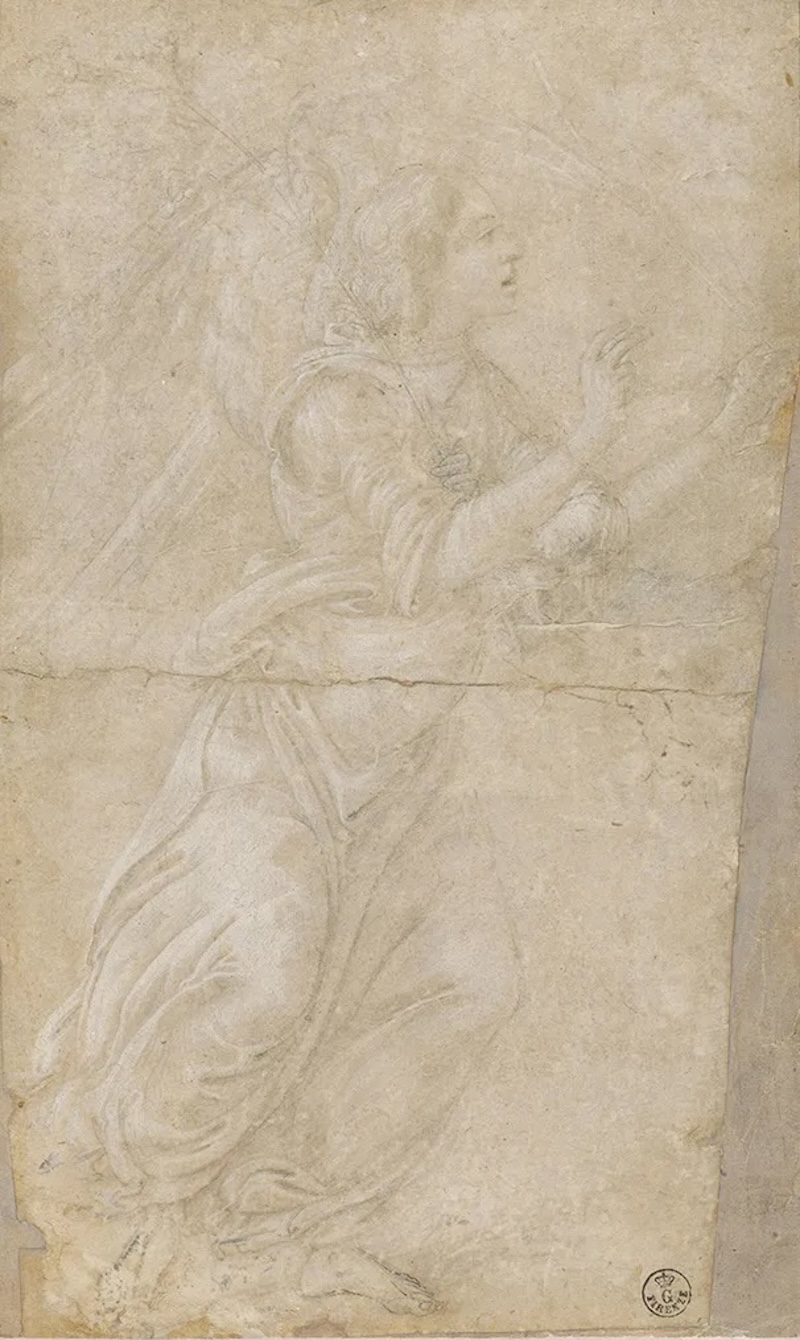
Botticelli, Annunciation, circa 1485-1490, Uffizi Collection
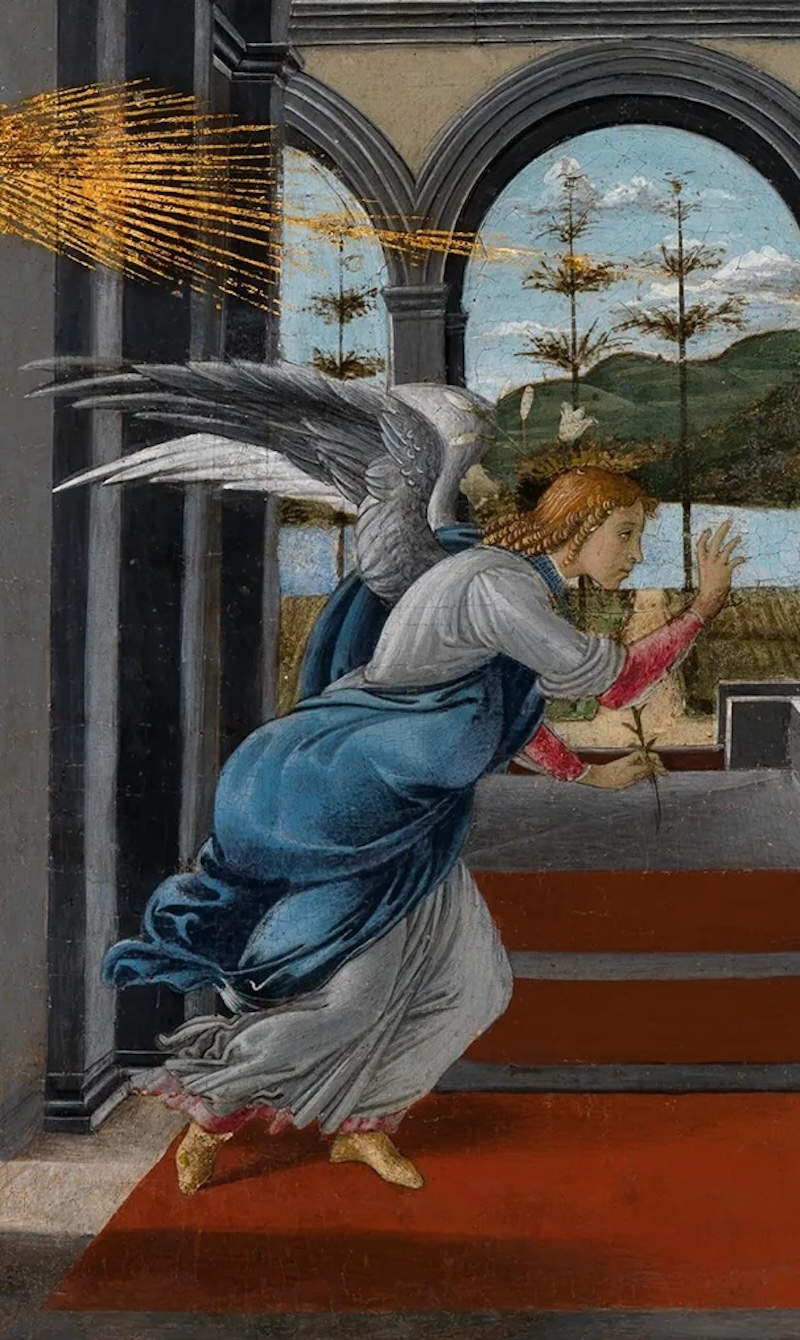
Botticelli, Annunciation (detail), circa 1485–1493, Kelvingrove Museum, Glasgow
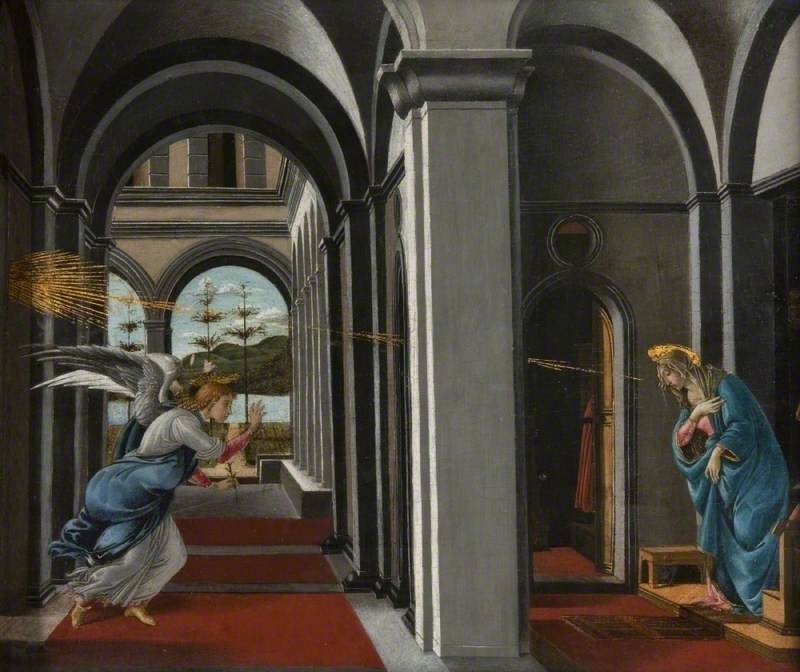
Botticelli, Annunciation, circa 1485–1493, Kelvingrove Museum, Glasgow
Additionally, Study for Three Young Men shows Botticelli exploring different forms of the human body using young assistants in the studio as models, and it highlights the artist's use of silver-point pens, exploratory markers, and thin white lines. Lippi's teachings are evident here, especially in the way the white pastel on pink paper highlights the figure's jawline and elegant posture.
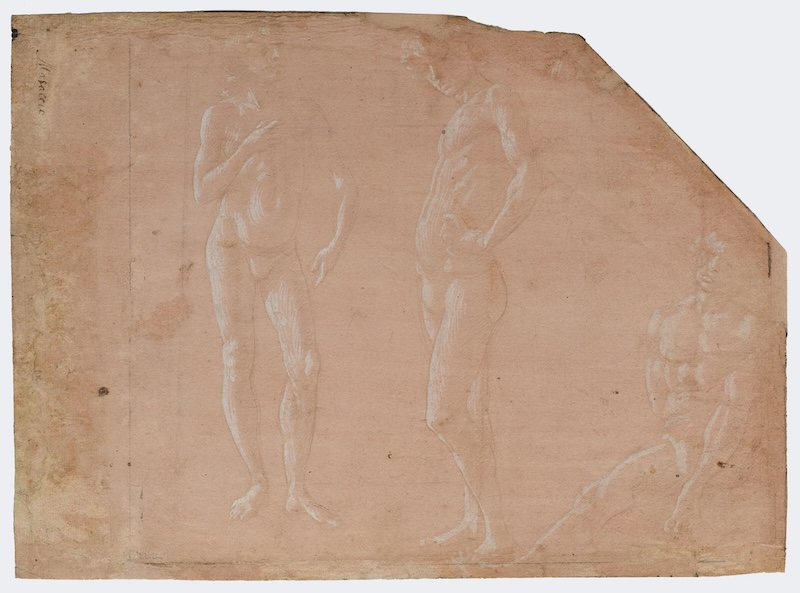
Attributed to Botticelli, Study of Three Young Men, circa 1465, Palais des Beaux-Arts, Lille, France
The correspondence between drawing and painting reflects the creative process behind Botticelli's most unforgettable masterpiece. "I'm excited to share my new findings," Rinaldi said, "which will help lay the foundation for a more comprehensive understanding of Botticelli's artwork and the field of Italian Renaissance art as a whole."

At the exhibition site, the sketch and oil painting of "The Annunciation" are juxtaposed.
Line drawing techniques
Regarding Botticelli's sketches, curator Rinaldi said, "His use of sketches reaches the core meaning of the word 'choreography'... In his sketches, Botticelli is writing Compose the image, depict the dance.”
In the exhibition, the audience will see Botticelli's vivid rendering of human figures, and the people in his paintings will seem to walk out of the picture. As the exhibition presents, the forms often appear to be in motion - whether jumping back in fear during battle or holding aloft a decapitated head, Botticelli's subjects appear to be dancing, flowing and A light presence makes Botticelli's characters distinct from other characters. "I tried to understand the core of this attraction," Rinaldi said. "Many contemporary artists and dancers are inspired by Botticelli. I felt that the common thread was that thread, the basis of Botticelli's work. Perfectly linear.”

Botticelli, "The Pious Jew", about 1505
At the entrance to the exhibition, a large projection composed of sketches allows the audience to see the complexity of light and dark, the depth of the characters and the gestures of the hands. “The point here is to allow the visitor’s eye to adjust to the lines and details,” Rinaldi explains, giving viewers a sense that “you are entering Botticelli’s art.”
Centered around "Botticelli's Drawings", the first gallery showcases Botticelli's apprenticeship at Lippi's studio, focusing on the three technical principles of Botticelli's training - a focus on human form and musculature ; Pay attention to the effect of light on clothes and curtains; and the combination of figures in the work. They recur throughout the exhibition.
Each exhibition hall focuses on an oil painting, and the exhibited works include important works such as "The Virgin and Child with the Young John the Baptist" and "The Adoration of the Magi". This combination helps the audience understand how Botticelli's sketches became The final part on the canvas.

Exhibition view, Botticelli’s work “The Virgin and Child and the Young John the Baptist”
For example, after seeing the aforementioned sketches of "Female Head Looking Down to the Left" and "Side Profile Man Head Looking to the Left" (both around 1468-1470), you will catch a glimpse of "The Virgin and Child with Young People" not far away. The same face on John the Baptist. Likewise, the male figure wrapped in a robe and thinking in the Study of St. Joseph Resting on the Right appears again in the Holy Family with St. John.
"We really wanted to understand what he was thinking and how he vividly expressed his ideas," Rinaldi said. "These sketches are so important to Botticelli's aesthetic and what makes Botticelli so appealing," Rinaldi said. He built his painting technique on lines.”
In the late 1470s and 1480s, Botticelli's career reached its peak. He successfully manages a large studio and produces work in a variety of mediums. His linear style translated easily to other materials, including painting, printmaking, book illustration, decorative woodwork, embroidery and tapestries, helping Botticelli's studio adapt to changing market demands.

Exhibition view, Botticelli and his studio "The Virgin and Child, Saint John the Baptist and Six Angels"
However, great political changes occurred in Florence in 1492. Lorenzo de' Medici died, the Medici family was expelled, and the religious extremist Savonarola came to power. Botticelli was also one of his followers and had Burned many of his own paintings in the infamous "Bonfire of the Vanities".
It was also after 1492 that Botticelli gradually moved away from the emphasis on physical beauty and anatomical accuracy. Instead, he created intense images filled with raw emotion. In his late works, figures are compressed and moved to the foreground, faces are distorted, and postures are exaggerated, breaking the balanced proportions of previous decades. The convoluted style of his late paintings, his heavy reliance on the studio, and his formulaic repetitions led to a decline in appreciation of his work, a decline in reputation during the latter half of his life, and poverty in his final years.
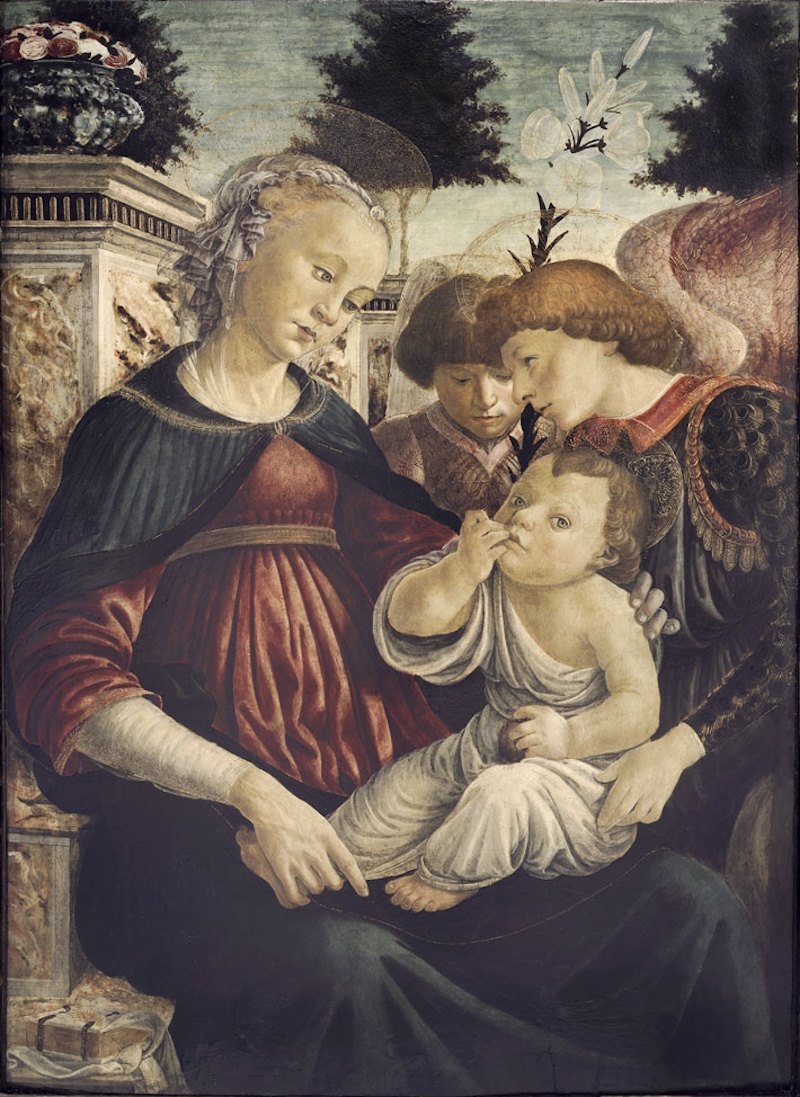
Botticelli, "Virgin and Child", 15th century, collected by the Strasbourg City Museum, the sketch of the angel on the right has been used many times
Part of the reason why it took more than three years to prepare for the exhibition was because Botticelli died in poverty in May 1510, and his family refused to accept his inheritance because they did not want to be responsible for his debts. The drawings were not preserved and passed down like many of his contemporaries, but were sold after his death. “Compared to Leonardo or Michelangelo, things are slightly different after their death in that students continue to run their studios and preserve and use drawings and sketches as the visual legacy of the artist’s ideas.”
In the last room of the exhibition, the poignant "Adventure of the Magi" may be an unfinished work in Botticelli's studio. Here, the work on linen is reunited for the first time with the preparatory sketch, but only fragments remain.
Note: This article is compiled from the exhibition website, the Guardian’s exhibition report “Perfect Linearity” and Datebook’s report “Why Botticelli and Renaissance Art Gathered in San Francisco”. The exhibition will last until February 11, 2024 .


